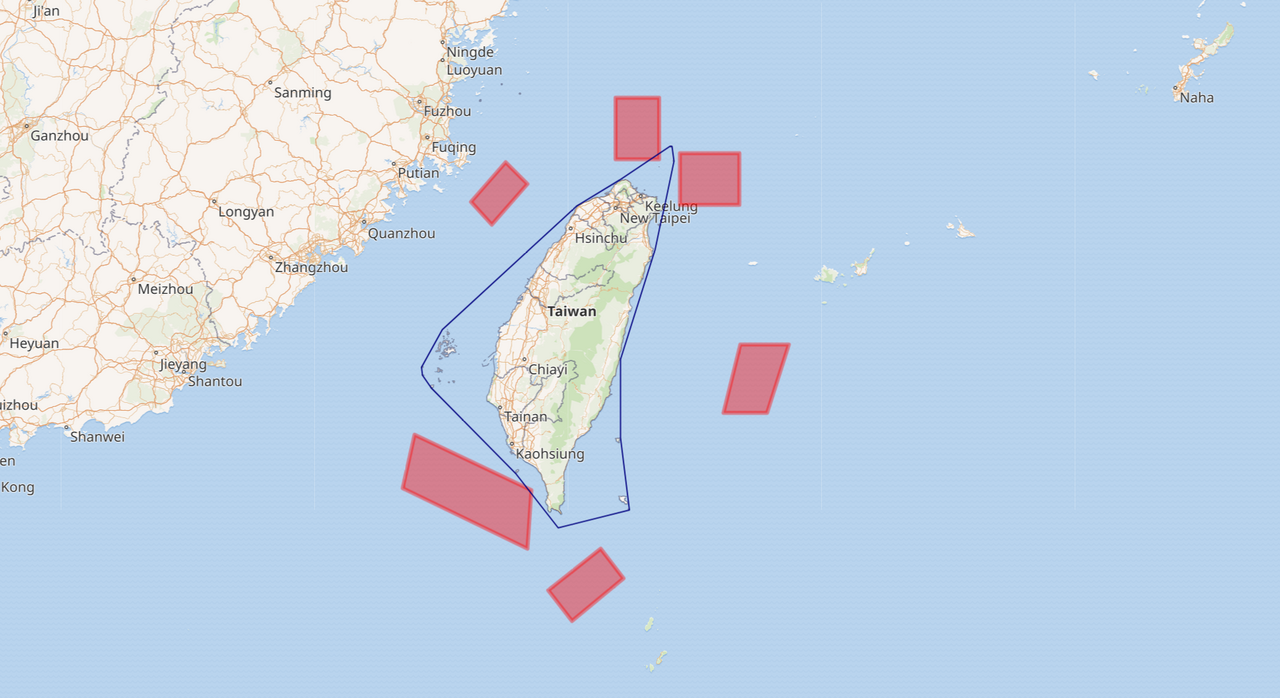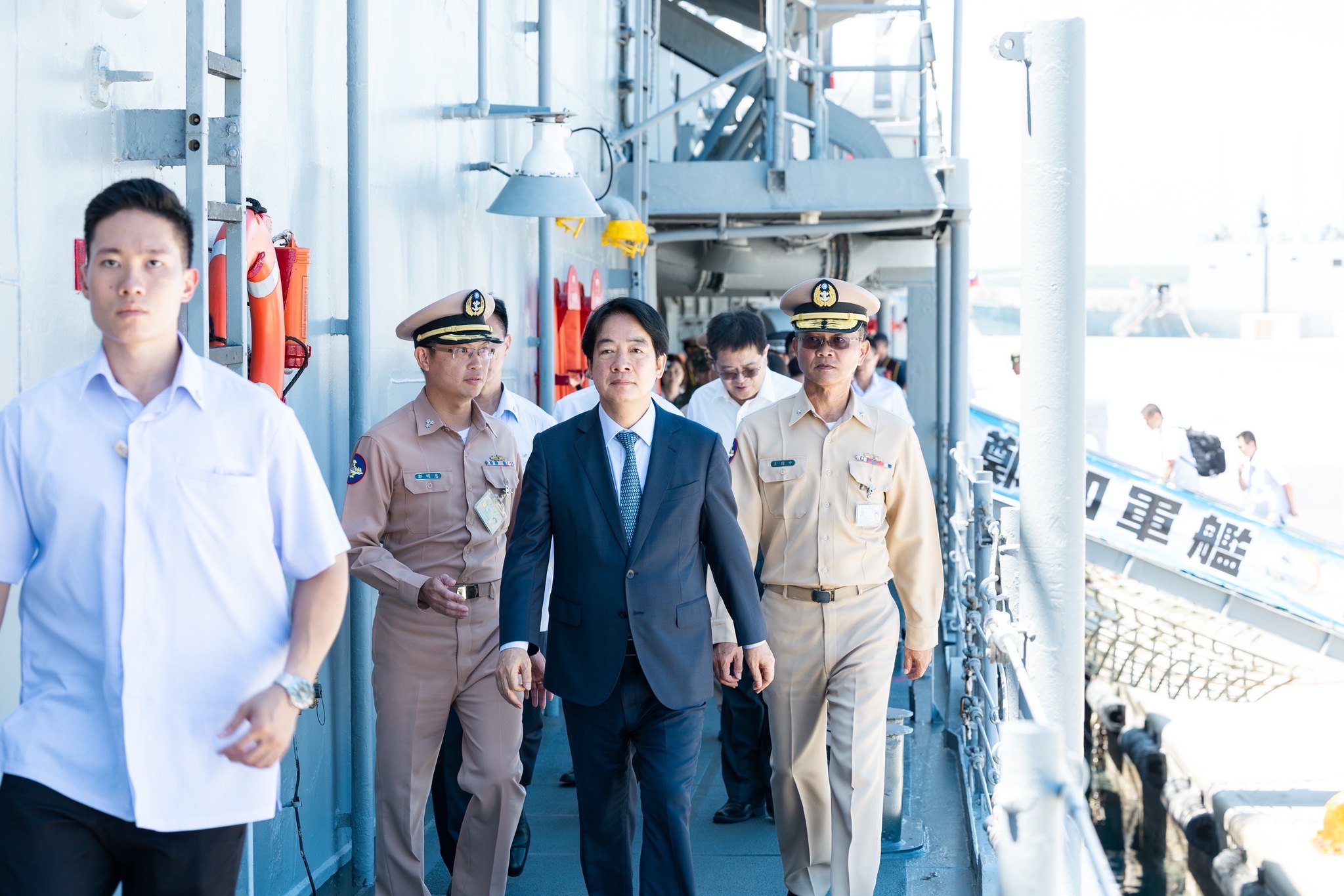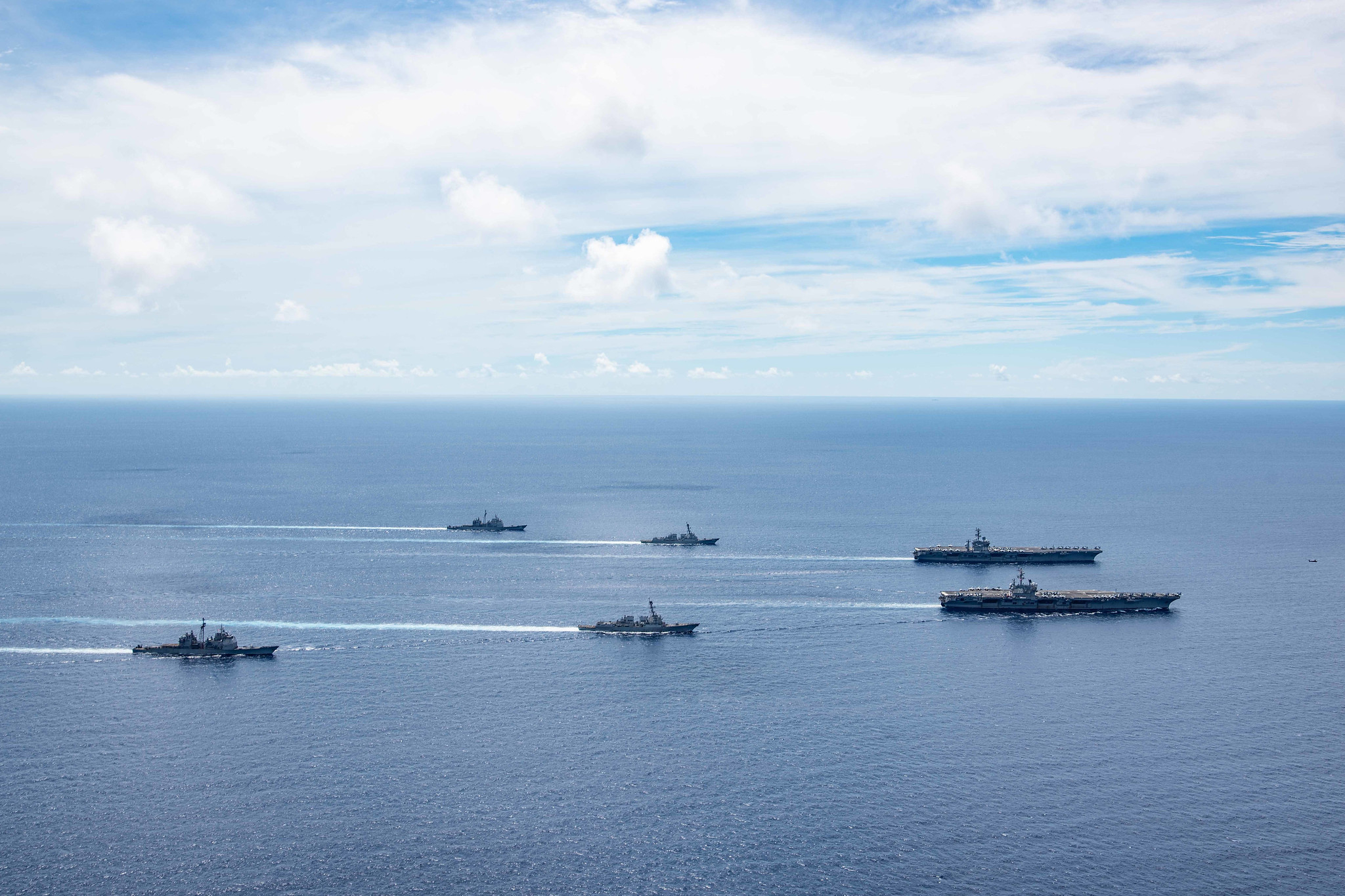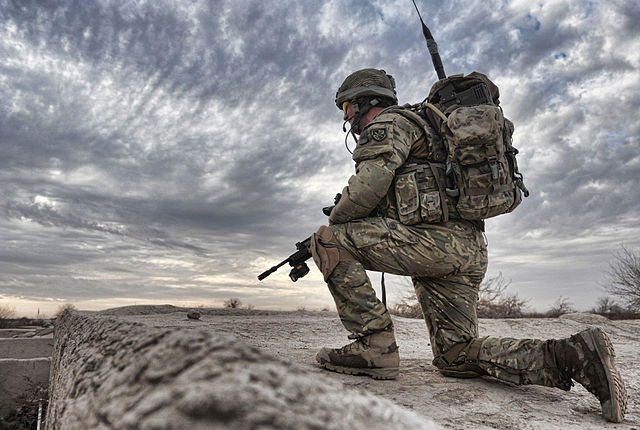The volatile crisis in the Taiwan Strait poses a significant risk of escalating tensions into open confrontation. China’s “peaceful rise” has led to the modernization and expansion of its military capabilities, which challenges U.S. influence, particularly in the Taiwan Strait. In recent years, a series of military drills around the island have heightened fears of a potential conflict. However, China’s tactics indicate that control may be pursued through means that avoid provoking a direct military response from the United States. This article examines the growing tensions in the Taiwan Strait, with a focus on China’s military drills and their broader strategic implications. It is essential to analyze how China’s approach reflects its desire to assert control over Taiwan without igniting a global security crisis and to discuss the key factors like the U.S. contributing to the increasing risk of conflict in the East-Asia region. [1]
China recognizes the significant role of hard power in preserving its sovereignty and substantially upgrades its military arsenal by increasing its military expenditures. [2] [3] In 2024, China’s defense budget amounted to $227 billion. [4] [5] Furthermore, China’s persistent investments in defense expenditure continue to facilitate the enhancement of these military capabilities, which poses an imminent threat to the security of the region. [3] China is leveraging military modernization, influence operations, and predatory economics to exert pressure on neighboring nations and reshape the region. China seeks to establish dominance in the Indo-Pacific in the near future and eventually achieve global hegemony. [6]
The quarrel over the status of Taiwan poses a significant obstacle to the realization of Xi’s “China Dream”. Although Beijing’s cross-strait policy under Xi has generally sustained the stance of preserving the status quo in the short term, with the long-term goal of reunification, Xi has emphasized the importance of addressing the Taiwan problem proactively. A more unsettling environment has arisen as a result of various actions and signals from Beijing, accompanied by intensified military activity in close proximity to Taiwan. These actions include explicit reminders that using force is not entirely ruled out as a potential means to achieve reunification. [7]
Taiwan Strait Crisis
Historical sources suggest that the island was first under full control of the Qing dynasty in the 17th century. In 1895, Japan won the First Sino-Japanese War, and the Qing government had to cede Taiwan to Japan. After World War II, Japan surrendered and relinquished control of the territory it had taken from China. Immediately after, a civil war erupted in mainland China between nationalist government forces led by Chiang Kai-shek and Mao Zedong’s Communist Party. The Communists won in 1949 and took control over Beijing. Chiang Kai-shek escaped to Taiwan, together with the remnants of the nationalist party (known as the Kuomintang, KMT) and its supporters (about 1.5 million people), where they ruled for the next several decades independently of mainland China. [8] Since then, relations between the two governments in Beijing and Taipei have been characterized by limited contact, tensions, and instability. [6] China and Taiwan both point to history for claiming the status of the island. Beijing asserts that there is only “one China” where only the People’s Republic of China (PRC) is the legitimate government, and following the “One-China Principle” seeks Taiwan’s eventual “unification” with the mainland because Taiwan is part of it. [9]
After the beginning of the new century, there has been a climax of political tensions. Taiwan’s debate on independence has been reopened due to the electoral victory of the Democratic Party. This sparked a reaction from Beijing with an anti-secession law stating China’s right to adopt “non-peaceful means” against Taiwan if it tried to “secede” from China and whoever defended it. In a 2019 speech, Xi proposed the “one country, two systems” formula that would incorporate Taiwan into the mainland. This is the same formula used for Hong Kong, which guaranteed the ability to preserve its political and economic systems and granted a “high degree of autonomy”. However, it would also allow Taiwan to come under Beijing’s control. [9]

The breaking point happened in August 2022 when the Speaker of the U.S. House of Representatives Nancy Pelosi visited Taipei and met with former Taiwanese President Tsai Ing-wen, further escalating tensions. Beijing strongly condemned the visit and subsequently planned military drills surrounding the island and launched ballistic missiles into the Pacific Ocean for the first time.
Since then, the overall trend lines do not indicate a “peaceful reunion” will occur. China is constantly performing military drills around the island, thus putting pressure on Taiwan. In May 2024, China conducted extensive military exercises around Taiwan shortly after the inauguration of William Lai Ching-te, Taiwan’s new president. [10] These drills, referred to as “Joint Sword-2024A”, were described by Beijing as a form of “punishment” for the election of the new president, whom China described as a “troublemaker” and “separatist”. In October, China carried out the “Joint Sword-2024B” military exercise, with several naval vessels and aircraft simulating combat scenarios over Taiwan, following President Lai’s statement affirming that Taiwan is not subordinate to China. [11]

In December 2024, Beijing deployed 90 navy and coast guard ships carrying out “grey-zone tactics” to train actual forces and restrict airspace. China’s strategy aims to assert control within the first island chain, a strategic chain of islands encompassing Japan, Taiwan, parts of the Philippines, and Indonesia. This creates a highly volatile situation, where even a minor violation of international law could prompt a response from Taiwan. [12]
Factor United States
China’s growing military capabilities and assertiveness, as well as the deterioration in cross-strait relations, are concerning the United States, leading to a possible confrontation between the two major superpowers. That is because China has not ruled out using force to achieve Taiwan’s “reunification”. Currently, the United States has not ruled out the possibility that it would intervene directly to defend Taiwan if China attacks. However, it also has not affirmed its willingness to respond militarily. There is indeed a case of strategic ambiguity regarding the possible actions the United States might take. [9]
However, the main reasons why the United States would defend Taiwan are various. The first one has an economic nature. Taiwan is one of the world’s leading global manufacturing hubs: 60% of global trade volumes pass through the strait. Similarly, the country is the leading semiconductor producer with a staggering 80% share globally. [13] Semiconductors or “chips” are essential elements of any electronic device, which have the ability to regulate electricity flows to process, store, and transmit data. That causes an increase in the United States’ motivation to defend the island due to its dependency on this field. The second one is more geopolitical. The island between Japan and the Philippines has great strategic importance. Taiwan has even been described as the aircraft carrier of the United States by U.S. General Douglas MacArthur. [14] Thus, the United States cannot accept a Chinese takeover of Taiwan, as it would grant Beijing greater access to the Pacific and significantly enhance its control over the South China Sea. [15]

China’s Strategy
Chinese President Xi Jinping has directed the People’s Liberation Army (PLA) to be prepared to invade the island by 2027, although the basis for this claim is not given. The “reunification” of China with Taiwan “must be fulfilled” according to President Xi Jinping, who has not ruled out the possibility of using force to accomplish this. [6] However, general rumors suggest that a Chinese invasion is further off than previously thought. Indeed, Xi wants to accomplish his “Chinese Dream” by 2049, the 100th anniversary of the Communist party, and Taiwan is essential to restore China’s great-power status. [16] Xi’s calculations might be motivated by political rather than military factors. He has stated that the Taiwan problem “must not be passed on from generation to generation”. Reunification is a crucial part of a larger political project known as the “great rejuvenation of the Chinese Nation”. [17] Xi hopes to complete reunification as part of his legacy, even though there is no real national security interest at stake for China in Taiwan, only his pride.
Moreover, China has employed a variety of coercive tactics short of armed conflict to pressure Taiwan and prompt the Taiwanese population to overturn their opinion in order to make them aware that their best and only option is unification with the mainland. For instance, thousands of cyberattacks from China targeting its government agencies and Taiwanese media are reported every day. [9] Social media platforms are recognized as the primary battlefield in the ongoing conflict, where it is estimated that Taipei is exposed to a significant amount of disinformation, with reports identifying at least 2400 instances of such content daily. [18] These information warfare tactics are hugely impacting Taiwanese society. The manipulation of social media, which disseminates fake news, distorts events and creates biased opinions, forms communication issues with social division, and internal tensions undermine the democratic process, the national sovereignty, and its ability to make independent political decisions. Furthermore, cultivating a pro-China sentiment through these strategies, both within Taiwan and on the international stage, is decisive in weakening and isolating the island and its diplomatic alliances, limiting its ability to garner support on critical issues. Beyond social implications, these tactics compromise defense infrastructure and military aspects since they are also aimed at military channels criticizing ROC’s army preparedness and capacity. [19]
Indeed, the Taiwanese army could not compete in a direct confrontation with the PLA. Despite a significantly larger number of reserve personnel, 2.3 million over the 500,000 Chinese, Taiwan has 200,000 active-duty ground forces, whilst China’s People’s Liberation Army has a ground force of around 2.04 million soldiers. [4] It also has significant advantages in artillery, aviation, and ships. According to Taiwan’s military leaders, Taiwan could resist a Chinese invasion for approximately two weeks if the United States does not take active action. [20] However, China would be reluctant to use military force because war is inherently dangerous and unpredictable. Russia’s invasion of Ukraine in early 2022 reignited the debate that Beijing could become more cautious after witnessing Russia’s challenges and the world’s response. Russia’s actions are unlikely to determine China’s decision to use force. However, Chinese leaders will likely study Russia’s failures and adjust their operational strategies to prevent repeating the same mistakes. [18] Despite China spending more than any country except the United States on defense, expanding its range of capabilities regarding naval power, nuclear power, missile technology, aviation, and cyber, its army could not be tactically ready to face a military attack on Taiwanese soil. The People’s Liberation Army has not engaged in war since 1979 (and that was the disastrous invasion of Vietnam). Amphibious invasions are among the most logistically complex operations in warfare, and the PLA would take heavy casualties during a crossing of the Taiwan Strait and a landing on Taiwan’s shores. Even if Taiwan’s government were to fall quickly, China could find itself fighting a protracted insurgency in mountainous and heavily urbanized terrain. [20]
Taiwan has been rearming for years, and little by little, it is turning into a fortress. Last year, the defense budget amounted to around $19 billion, [4] adding new capabilities to its military equipment, purchasing numerous new weapon systems, and upgrading its defense. It is also often ignored that Taiwan is a mountainous island with peaks that reach up to three thousand meters full of bunkers, and there are even underground airports. The most important elements of Taiwanese defense are kept protected under the ground. In addition, the island relies heavily on the so-called “prolonged defense” or “territorial defense”, commonly called the “porcupine strategy”. [21] The main program of the Taiwan army is a resolutive defense, resorting to a kind of guerrilla warfare with modern armaments. Meanwhile, thanks to the lessons from the war in Ukraine, China is aware that current military technology favors defense over offense. Protecting oneself in the mountains makes destruction by air strike difficult. Taiwan also has few beaches suitable for an amphibious attack. Therefore, a single wave would not be enough to overwhelm its defenses. The PLA would still have to overcome the Taiwan Strait, thus subjecting itself to fire from Taiwanese coastal defenses and possibly the American and Japanese assets in the region. Such an amphibious invasion could well result in a massacre of the invading Chinese forces. [21]
What to Expect from the Future?
China’s intentions of invading Taiwan would probably be marked by events and actions within the country, such as mobilization, the construction of anti-bomb shelters, hospitals, and similar. “If war is Beijing’s plan, there ought to be reliable indications that it is coming,” noted John Culver, a former CIA veteran. [22] Culver highlights the transparent nature of this information, which may quickly be detected by Western government and private analysts, indicating preparations for war. However, the assumption that using force is the only reunification tactic at Beijing’s disposal is a “dangerous oversimplification”. [23] China’s political strategy for unification has always included a military component, along with economic, information, legal, and diplomatic elements that are often overlooked. While it may be tempting to view China’s options as a simple choice between peace and war, these other factors, which could effectively isolate or apply greater pressure on Taipei, deserve more consideration. Along with military options short of invasion, blockades of Taiwan’s ports, and economic quarantines to choke off the island’s trade. There are a variety of coercive means that China could pursue without abandoning the peaceful path. [20]
Analysts foresee that China may adopt a strategy of incremental escalation, referred to as “salami tactics”, gradually shifting the status quo over Taiwan in its favor. The concern is that China may not directly attack Taiwan; instead, it could implement a series of actions that do not provide the United States with a clear justification for military intervention. [20] Hence, China’s strategic objective is to engage in conflicts that are limited in scope, preventing the United States from employing its complete military power. By pursuing this approach, China aims to minimize the likelihood of a significant U.S. military intervention. They carefully choose targets, tactics, and strategies that remain below the threshold necessary to provoke a massive response from the United States. [24]
China’s military drills are intended more as a strategic blockade of the island rather than a prelude to a direct invasion. These exercises align with Beijing’s aforementioned tactics aimed at exerting pressure and asserting control over the island while avoiding the high risks and costs associated with an all-out war with Taiwan. Nevertheless, they reflect China’s increasing frustration with the slow progress of “reunification”. Finally, the continued use of such military maneuvers is expected as a means for China to maintain pressure and signal its resolve while avoiding overt conflict that could further destabilize the region. Future China’s decisions will have broader and more significant implications in shaping the dynamics of the Taiwan Strait and influencing regional geopolitical stability. [25]
Article reviewed by Martin Machorek and Tomáš Zwiefelhofer
References
[1] Layne, C. (2008). China’s challenge to US hegemony. Current History, 107(705), 13-18. Retrieved from https://www.proquest.com/openview/9e70889924f52468a5fd5cdb15ee0387/1.pdf
[2] Garrick, J., & Bennett, Y. (2020). China’s rise and the weaponization of soft and hard power: How the U.S., Japan, India, and Australia are responding. Journal of Political Risk. Retrieved from https://www.jpolrisk.com/chinas-rise-and-the-weaponization-of-soft-and-hard-power-how-the-u-s-japan-india-and-australia-are-responding/
[3] Funaiole, M., Hart, B., Glaser, B., & Chan, B. (2021). Understanding China’s 2021 defense budget. Center for Strategic and International Studies. Retrieved from https://www.csis.org/analysis/understanding-chinas-2021-defense-budget
[4] Comparison of China and Taiwan military strengths. (2024). Retrieved from https://www.globalfirepower.com/countries-comparison-detail.php?country1=china&country2=taiwan
[5] Le Thu, H. (2018). China’s dual strategy of coercion and inducement towards ASEAN. The Pacific Review, 32(1), 20-36. Retrieved from https://www.tandfonline.com/doi/full/10.1080/09512748.2017.1417325
[6] Brown, D. (2022). China and Taiwan: A really simple guide. BBC News. Retrieved from https://www.bbc.com/news/world-asia-china-59900139
[7] deLisle, J. (2020). Foreign policy through other means: Hard power, soft power, and China’s turn to political warfare to influence the United States. Foreign Policy Research Institute, 64(2), 174-206. Retrieved from https://www.sciencedirect.com/science/article/pii/S0030438720300065
[8] BBC News. (2024). What’s behind China-Taiwan tensions? BBC News. Retrieved from https://www.bbc.com/news/world-asia-34729538
[9] Maizland, L. (2022). Why China-Taiwan relations are so tense. Council on Foreign Relations. Retrieved from https://www.cfr.org/backgrounder/china-taiwan-relations-tension-us-policy-biden
[10] Hayes, R. W., & Perera, A. (2024). China launches military drills surrounding Taiwan. BBC News. Retrieved from https://www.bbc.com/news/articles/cvgd4yn45qlo
[11] Chang, W., McCarthy, S., Cheung, E., & Gan, N. (2024). China begins military movements around Taiwan as the island braces for potential drills. CNN. Retrieved from https://edition.cnn.com/2024/12/09/asia/china-military-movement-taiwan-lai-trip-intl-hnk/index.html
[12] Lee, Y., & Blanchard, B. (2024). Taiwan raises alert as China deploys 90 ships in likely exercises. Reuters. Retrieved from https://www.reuters.com/world/asia-pacific/taiwan-military-sets-up-emergency-response-ahead-chinese-drills-2024-12-09/
[13] Funaiole, M.P. et al. (2024) Crossroads of commerce: How the Taiwan strait propels the global economy. Center for Strategic and International Studies – CSIS. Retrieved from https://features.csis.org/chinapower/china-taiwan-strait-trade/
[14] Green, R. (2005) The Unsinkable Aircraft Carrier. Taiwan Today. Retrieved from https://taiwantoday.tw/news.php?unit=4%2C29%2C31%2C45&post=4186 (Accessed: 30 January 2025).
[15] Sacks, D. (2023). Why is Taiwan important to the United States? Council on Foreign Relations. Retrieved from https://www.cfr.org/blog/why-taiwan-important-united-states
[16] An, D. (2019). China’s possible invasion of Taiwan (Part II): 2025, 2030s, 2049, or 2050? Global Taiwan Institute. Retrieved from https://globaltaiwan.org
[17] Amonson, M. A., & Egli, D. (2023). The evolving importance of information warfare defense. Journal of Indo-Pacific Affairs. Retrieved from https://media.defense.gov
[18] Koetse, M. et al. (2017). The social media spectacle of China’s Taiwan military exercises. Lowy Institute. Retrieved from https://www.lowyinstitute.org/the-interpreter/social-media-spectacle-china-s-taiwan-military-exercises
[19] Fulco, M. (2022) China Intensifies Taiwan Social Media Influence Operations. Taiwan Business TOPICS. Retrieved from https://topics.amcham.com.tw/2022/09/china-intensifies-taiwan-social-media-influence-operations/
[20] Keating, J., & Pike, L. (2022). The big Taiwan question: Is China’s invasion imminent? The Messenger. Retrieved from https://themessenger.com/grid/the-big-taiwan-question-as-china-issues-warnings-and-holds-military-drills-is-a-chinese-invasion-imminent
[21] Timbie, J., & Ellis Jr., J.O. (2022). A large number of small things: A porcupine strategy for Taiwan. The Strategist, 5(1), 83-93. Retrieved from https://tnsr.org/2021/12/a-large-number-of-small-things-a-porcupine-strategy-for-taiwan/
[22] Culver, J. (2022). How we would know when China is preparing to invade Taiwan. Carnegie Endowment for International Peace. Retrieved from https://carnegieendowment.org/2022/10/03/how-we-would-know-when-china-is-preparing-to-invade-taiwan-pub-88053
[23] Yeh, N. (2022). How Taiwan is preparing for a war that may never come. The China Project. Retrieved from https://thechinaproject.com/2022/10/04/how-taiwan-is-preparing-for-war/
[24] Edel, C., & Brands, H. (2019). The real origins of the U.S.-China Cold War. Foreign Policy. Retrieved from https://foreignpolicy.com/2019/06/02/the-real-origins-of-the-u-s-china-cold-war-big-think-communism/
[25] Jash, A. (2024). China’s Military Exercises Around Taiwan: Trends and Patterns. Global Taiwan Institute. Retrieved from https://globaltaiwan.org/2024/10/chinas-military-exercises-around-taiwan-trends-and-patterns/





